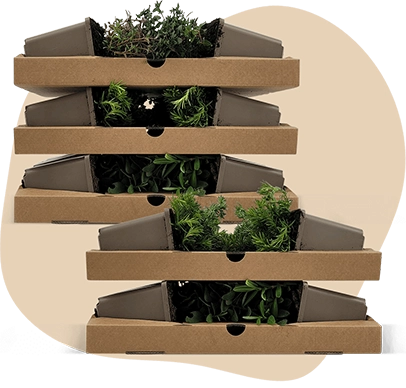Description
Musa basjoo | Hardy banana
The Musa basjoo, commonly known as the Hardy banana, is a striking plant with an upright growth habit. This plant can reach a height of up to 4 metres, making it a standout feature in any garden. The leaves of the Musa basjoo are large and green, providing an exotic look and feel. They are smooth to the touch and do not emit any scent. As an evergreen plant, the Hardy banana retains its foliage throughout the year, adding a constant touch of greenery. It is relatively low-maintenance and can produce fruit under the right conditions. The Musa basjoo is perfect for creating a tropical atmosphere and offers shade in sunny gardens.
Key Plant Characteristics of Musa basjoo
- Musa basjoo does not produce flowers that are attractive to butterflies, bees, or bumblebees, and the plant is not fragrant.
- For optimal growth, Musa basjoo thrives in sunny or partially shaded locations.
- This plant prefers good garden soil that is well-drained to ensure healthy growth.
- The bark and branches of Musa basjoo are not particularly notable, as the plant is primarily valued for its large, green leaves.
Musa basjoo is an excellent choice for creating a tropical atmosphere in the garden. Its upright growth habit and large leaves provide an exotic look, making it a standout
garden plant for solitary placement. The plant is evergreen, offering year-round greenery and creating shaded areas in the garden.
Application of the Musa basjoo in the Garden
- The Musa basjoo is ideal for creating a tropical feel in the garden, perfect for use as a solitary plant to make a bold statement.
- With its upright growth habit, it can be used to create shaded areas on a balcony or terrace.
- This plant is winter hardy with protection, tolerating temperatures down to -28.9°C, making it suitable for USDA zone 5.
- It combines well with other tropical shrubs and plants that thrive in sunny or partially shaded areas.
- The Musa basjoo's greatest ornamental value lies in its large, exotic leaves that add a lush, green backdrop to any garden setting.



















